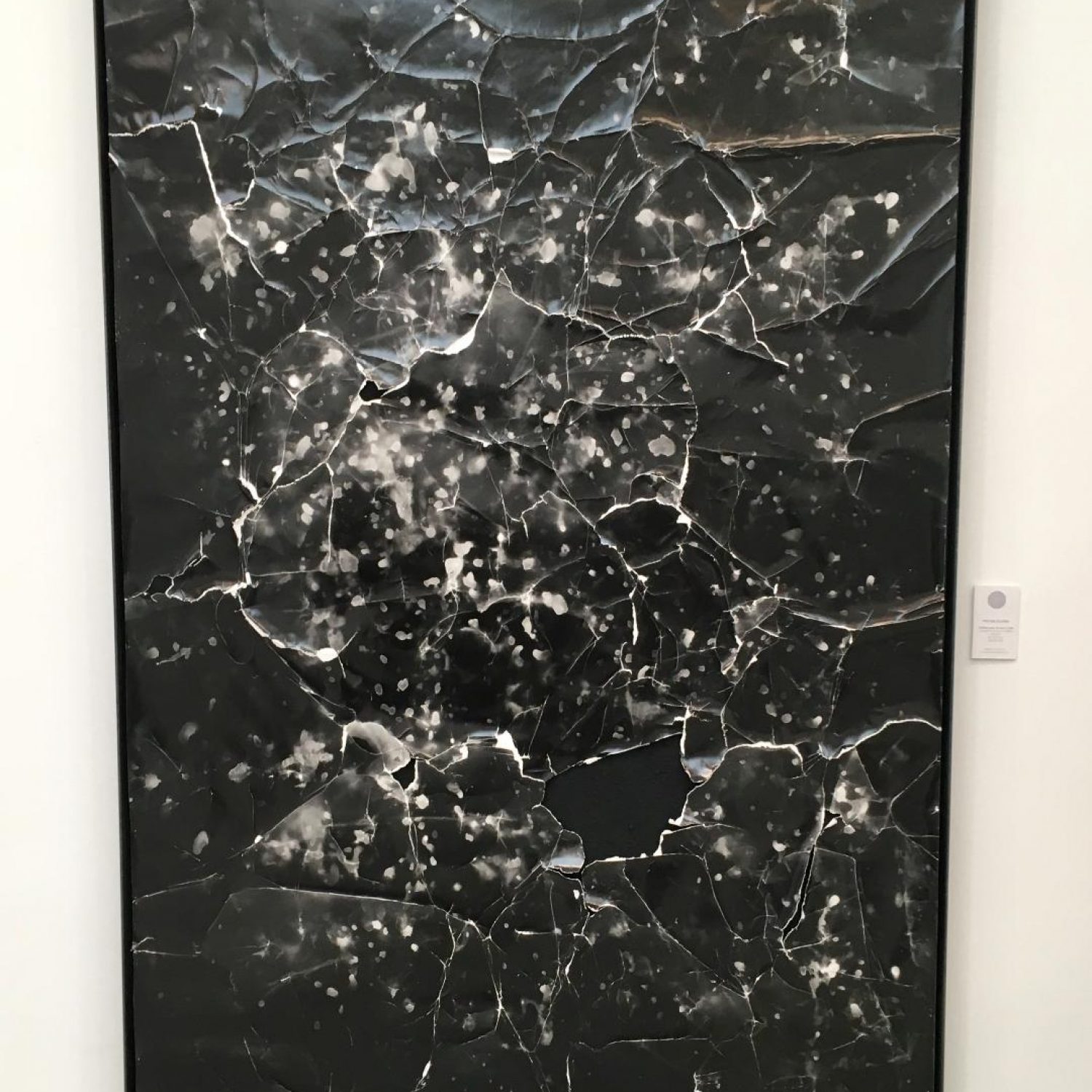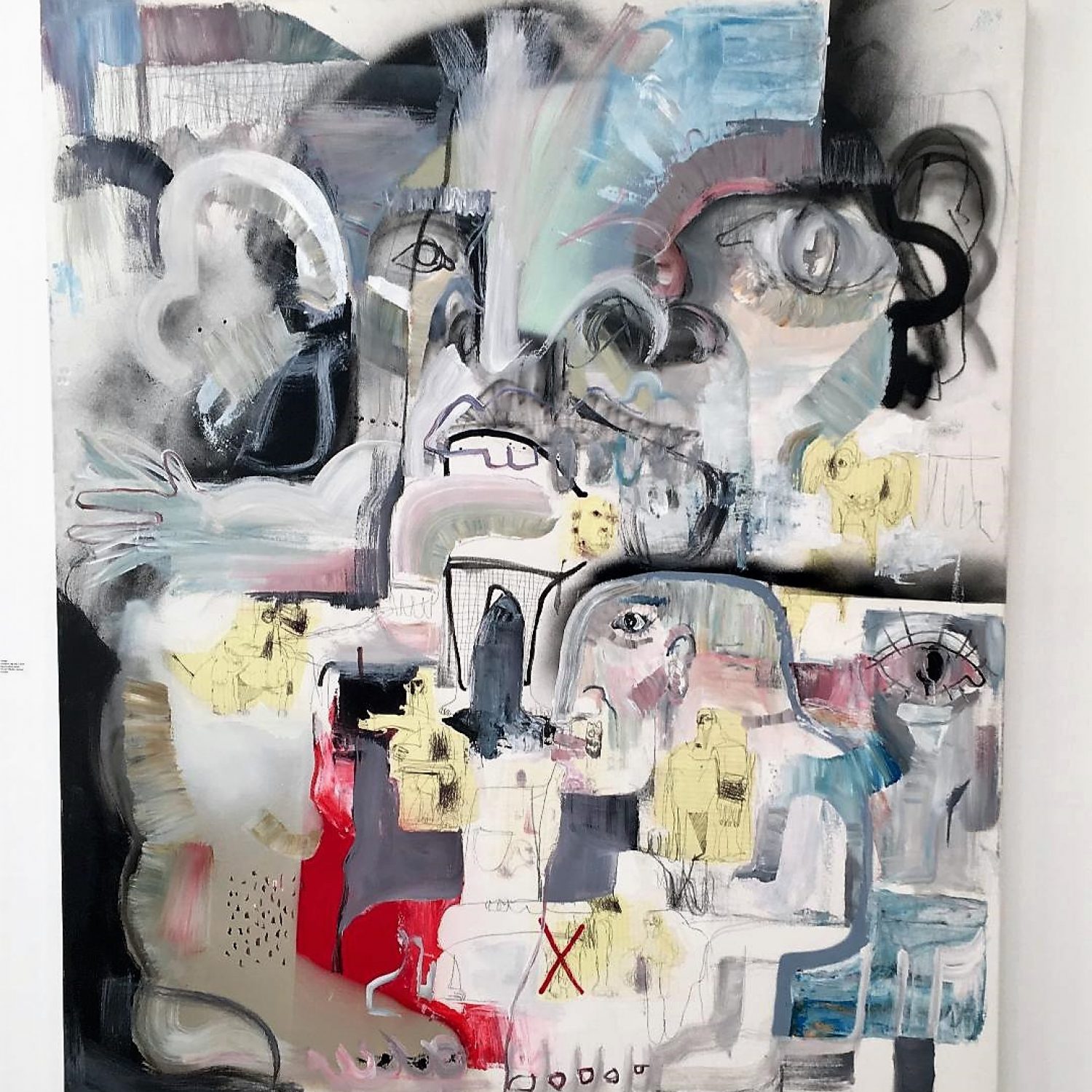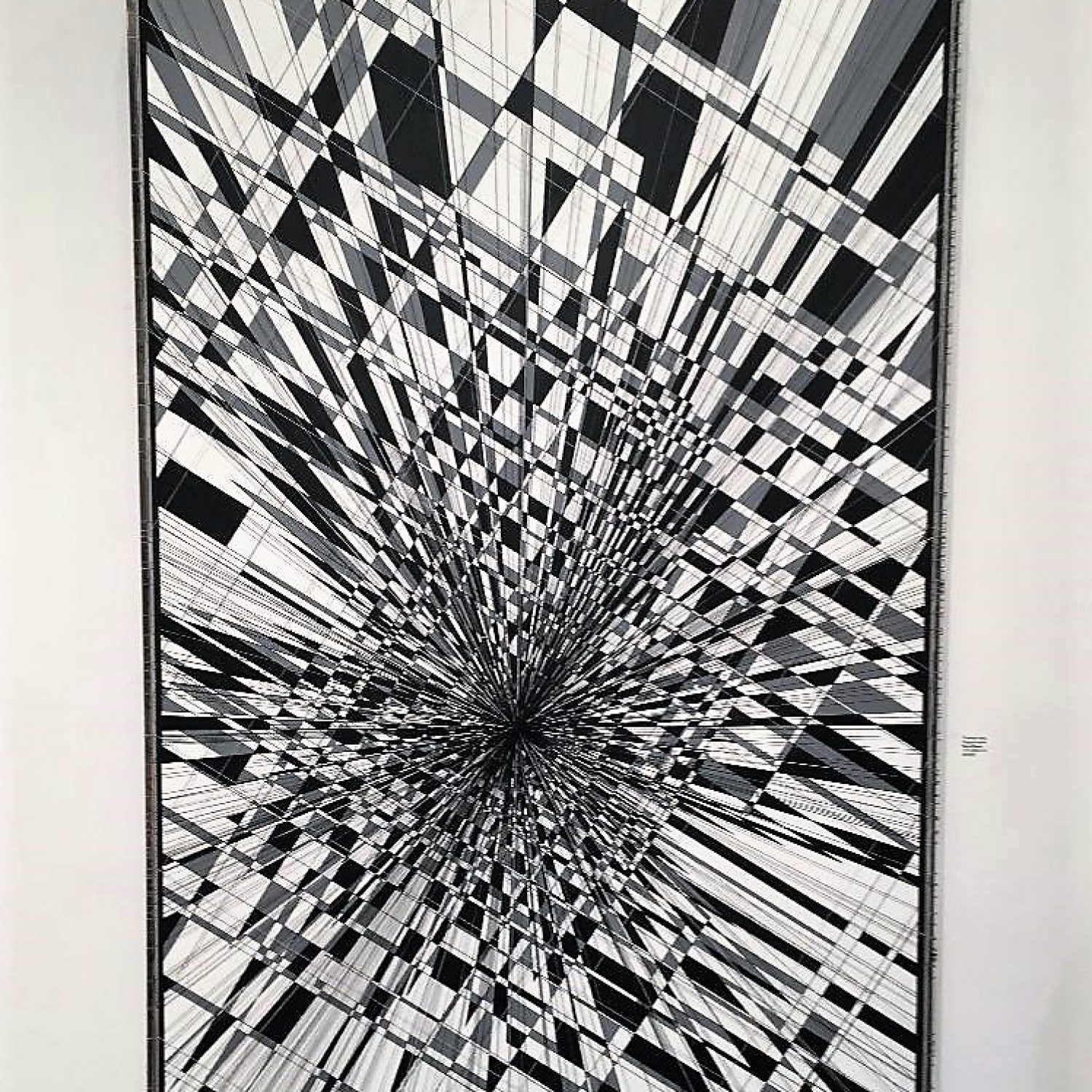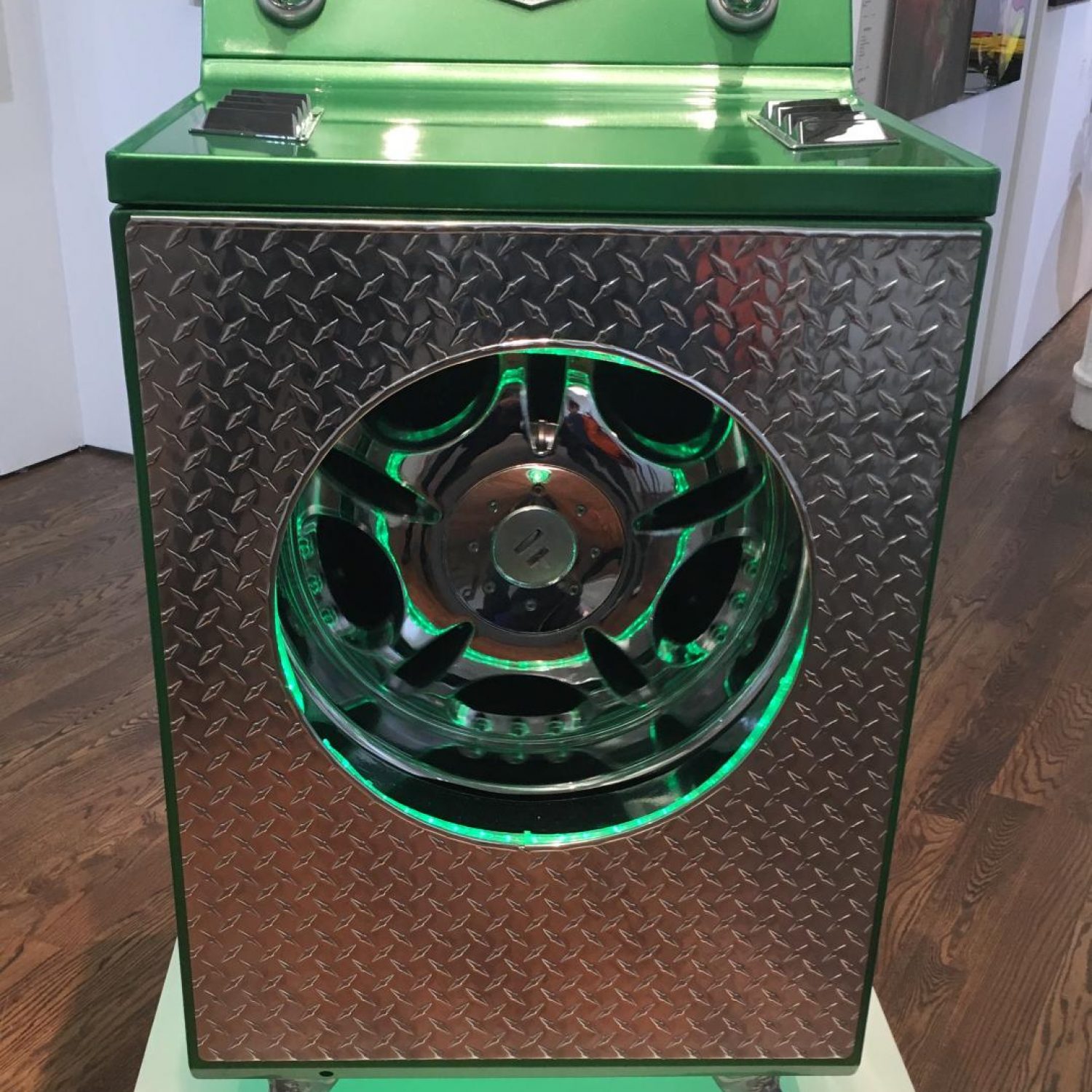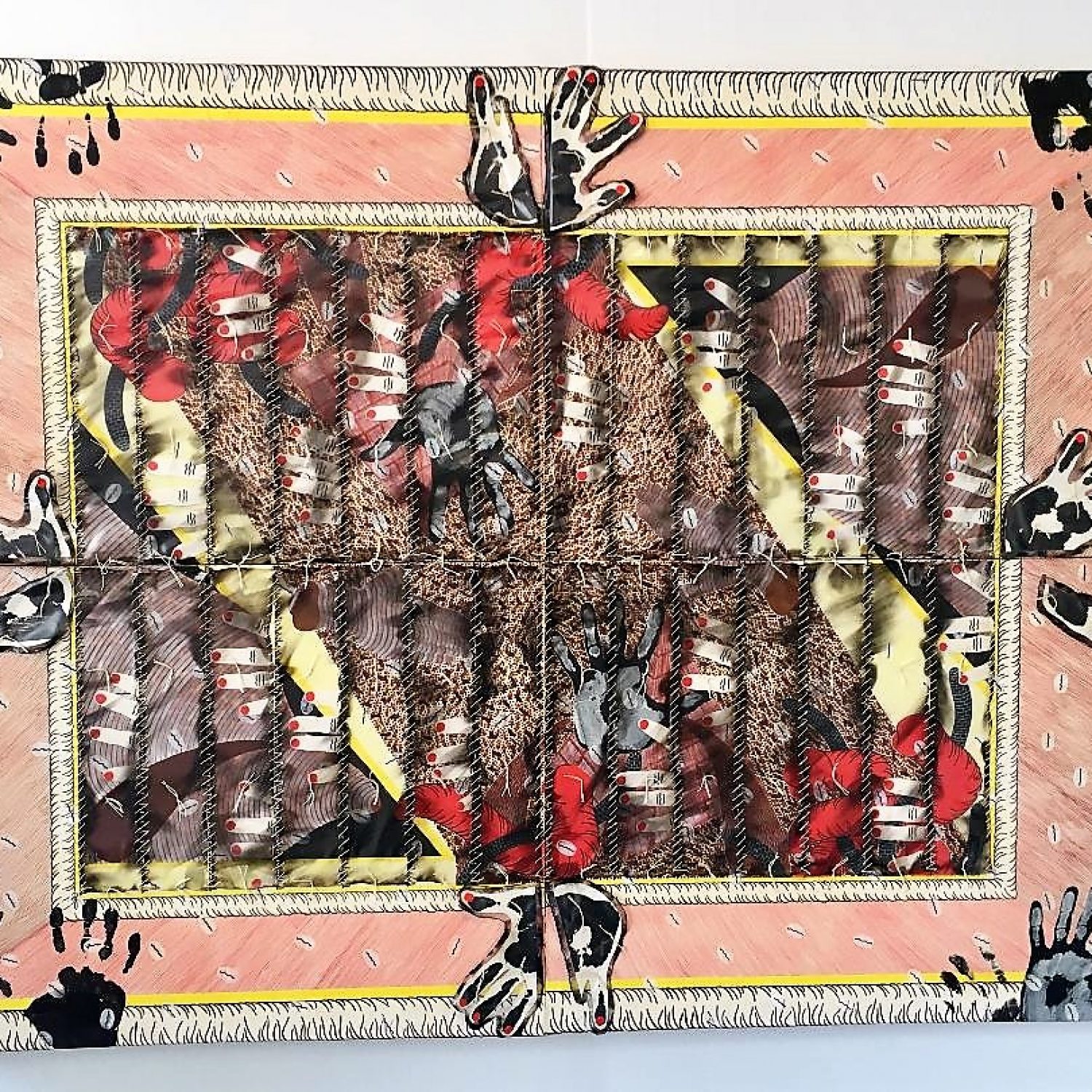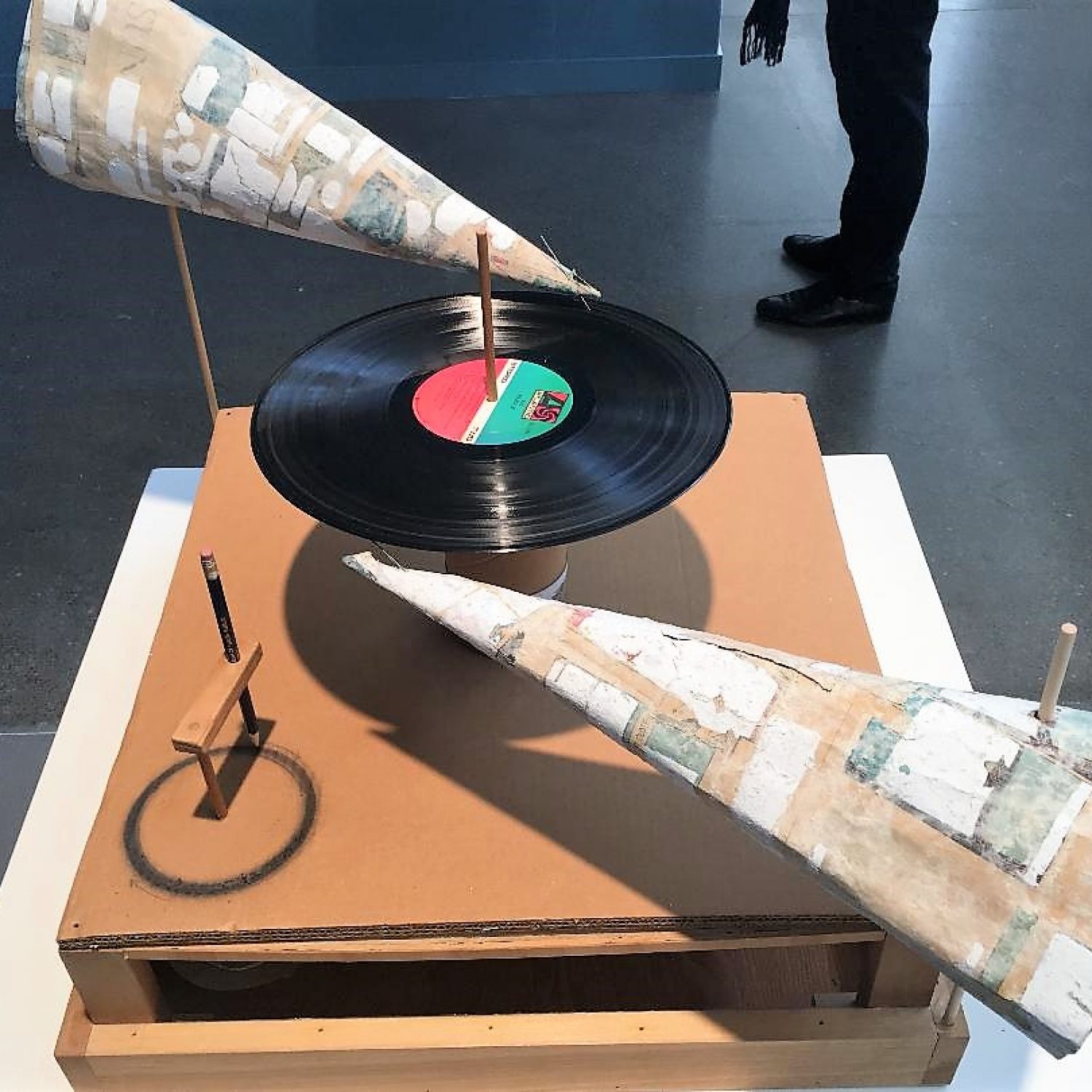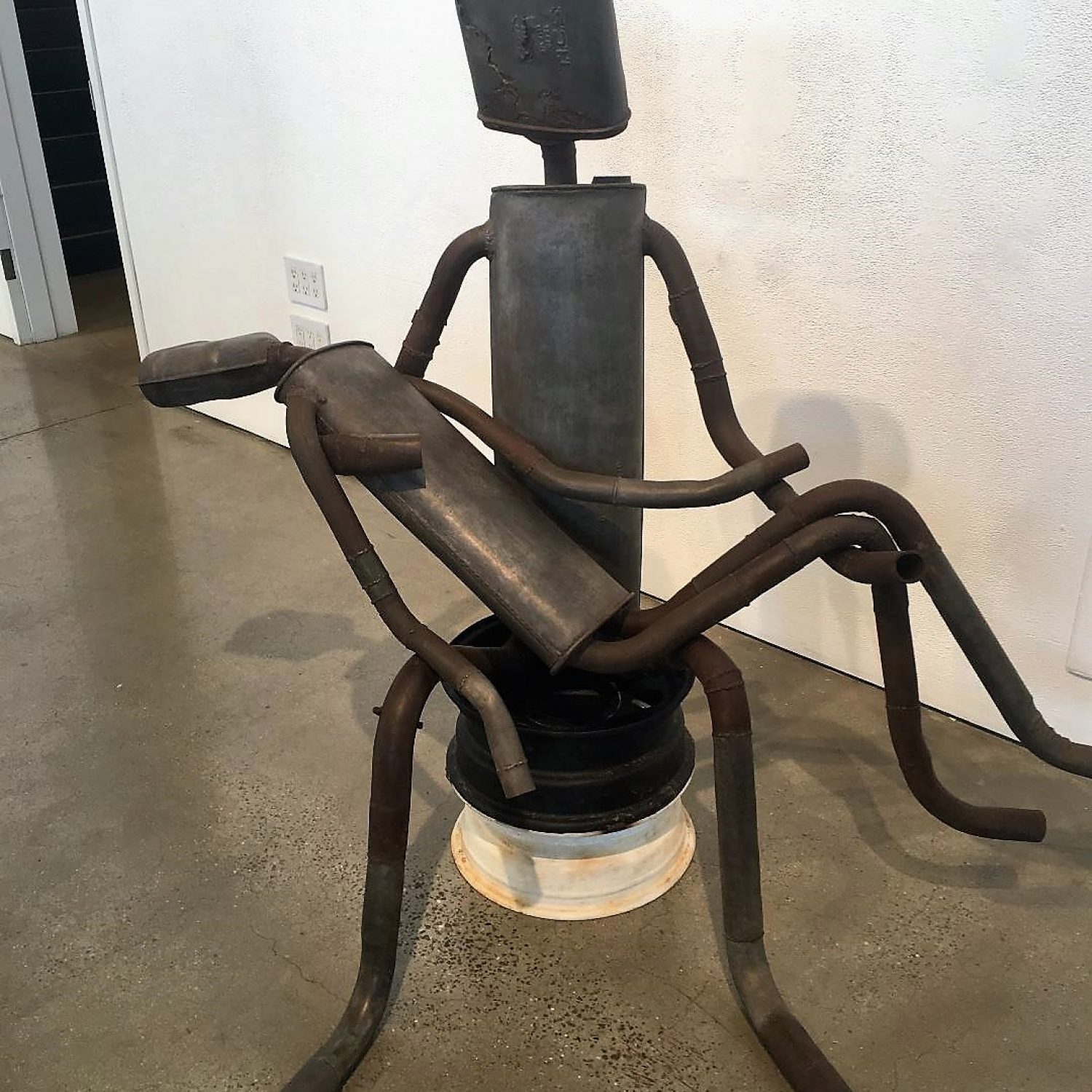- 5 years ago
-
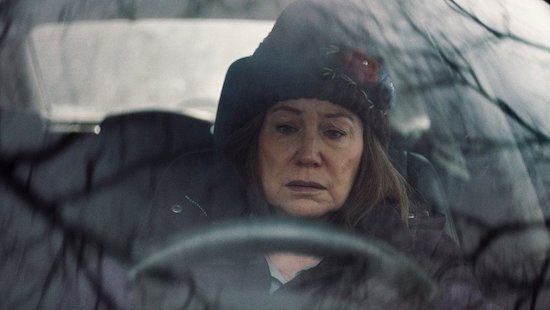
Courtesy of IFC Films Diane, the narrative debut by Kent Jones (director of the New York Film Festival) is a thoughtful, deeply affecting film, especially so for viewers who are middle-aged or older, or have recently been touched by death. (Though all but the most shallow of viewers will probably feel something.)
The film, which stars Mary Kay Place in one of the most intense and substantial roles of her career, is the portrait of a woman who busies herself caring for those around her while struggling with shame, loss and no less than the meaning of life itself.
In many ways she is like all of us, which is why the movie resonates. Ostensibly a simple story of an ordinary life in a New England town, Diane almost furtively tackles the Big Issues. The film starts off stylistically straightforward, with close-ups of mundane kitchen items and conventionally framed conversations, before becoming progressively more surreal, as if showing how we, like Diane, are part of a bigger picture that we can’t really control, or even grasp at times.
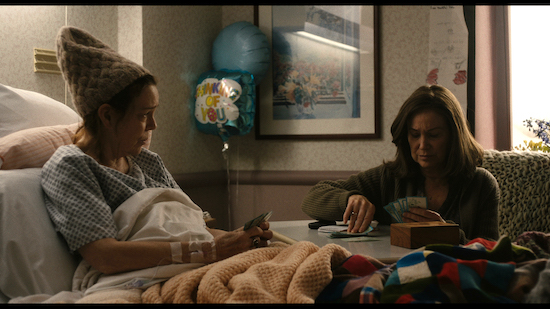
Courtesy of IFC Films We first see Diane asleep in a hospital room chair, as the room’s occupant, her cousin Donna (a sharp Deirdre O’Connell), asks if she’s OK. Throughout the movie, various friends, relatives and acquaintances will inquire about Diane’s well-being, as she cares for them. A retired widow, she brings food to ailing neighbors and volunteers at a soup kitchen with her friend Bobbie (a sympathetic Andrea Martin). She also visits her son Brian (Jake Lacy), a relapsed drug addict hostile to his mother’s entreaties to get help.
Diane has dinner with assorted friends and relatives, all of whom are openly concerned about the toll Brian’s plight is taking on her. “You’re not alone,” they insist, echoing her words to Brian. And indeed she is surrounded by a caring, close-knit community. The excellent cast of older actors includes Estelle Parsons as Diane’s aunt Mary, Donna’s mother; mother and daughter are amusingly blunt and classically New England in their ways, which makes for some light moments.
Diane repeatedly drops in on Brian, who is in worse and worse shape, until one day he disappears, which begins her unraveling. During a hospital visit with Donna, an old betrayal surfaces, and it becomes clear that this is the impetus behind Diane’s actions. We’re exhausted for her, as she drives a regular circuit that includes Brian’s place, the hospital, the soup kitchen, among other destinations.
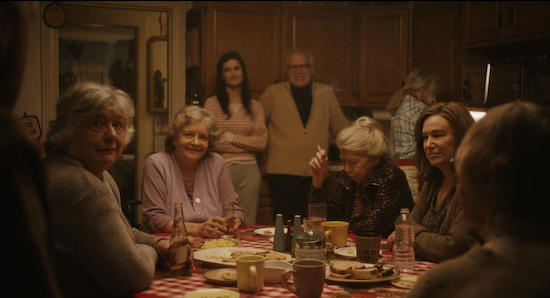
Courtesy of IFC Films When Brian finally resurfaces at a particularly fraught moment, Diane doesn’t seem especially relieved, though we understand her wariness and weariness. She is shown periodically writing down her thoughts in a journal, along with to-do lists, but her musings don’t necessarily lead to answers.
The film gradually takes on a hallucinogenic quality as it skips ahead in time and one by one, people exit Diane’s life. (Several variations on “No one lives forever,” are uttered over the course of the film.) A new development in Brian’s life flips their roles; a final scene between mother and son, touching on another of the film’s themes—forgiveness, is a poignant and welcome chapter in the film. The human connections and emotions in Diane feel real in their confusion and messiness.
By the movie’s end, we might feel a little depressed, but also a bit wiser. No matter how we struggle with relationships and try to do the right thing or what we think is the right thing in life, we all basically end up the same. Whether that’s a comfort or disappointment is something worth contemplating, as is the film itself.
Diane opens on Friday, March 29, at the IFC Center in New York City .
—Marina Zogbi
Latest News
- 5 years ago
-
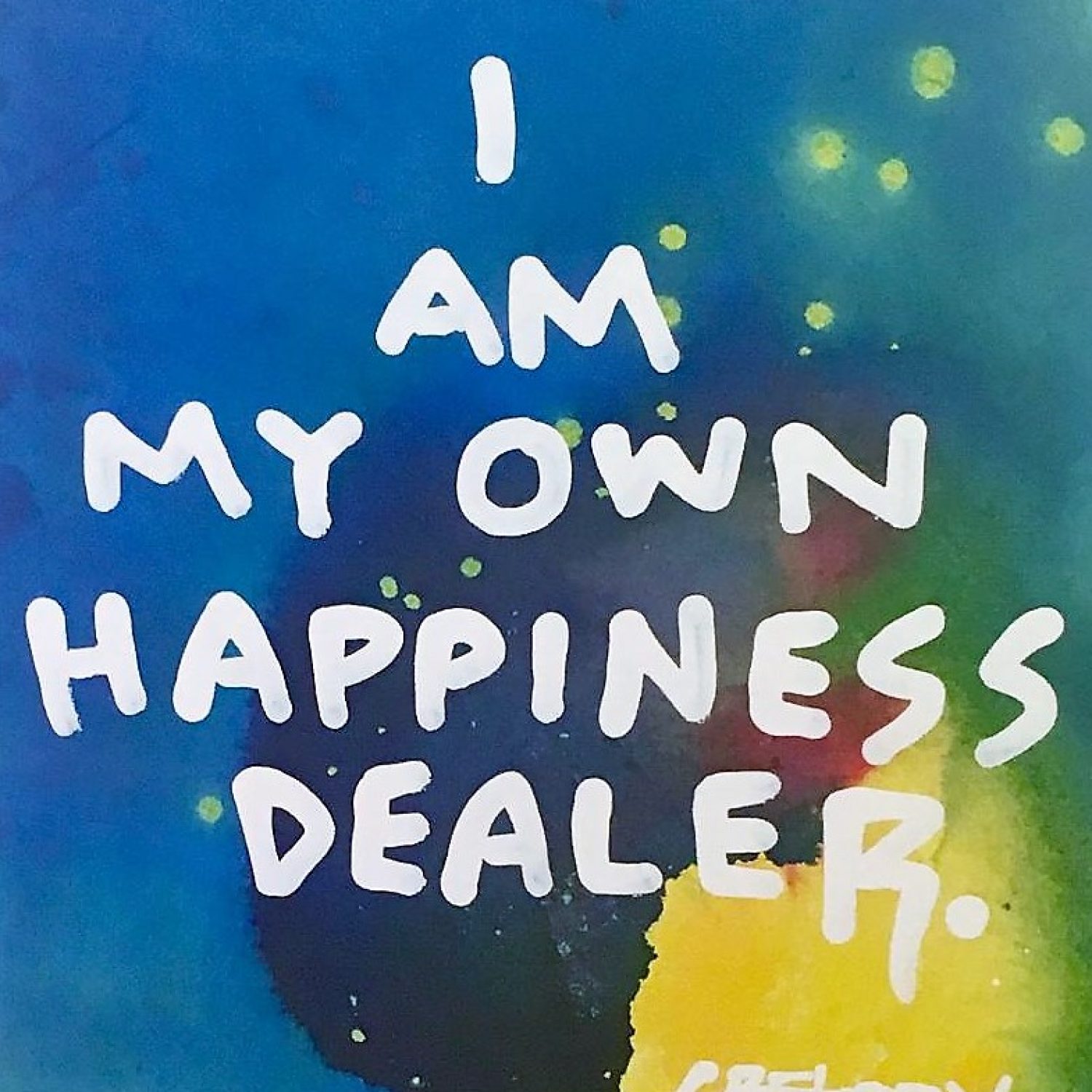
Gregory Siff, “You” ink, oil, crayon on canvas 2019 After missing the December shows in Miami, I was determined to get out and see what New York had to offer at Armory Week. I had planned to attend the Art on Paper opening on Thursday, but I wasn’t able to make it. So, Saturday was my day to get my art fix. I got an early start with the idea of beating the crowds and catching up with some artists and curators I haven’t seen for a while.
First stop was Plan B, which was one of the smaller shows- a pop up art show created by a group of gallery owners when Volta was cancelled. Sometimes you can find some really intriguing work at the smaller shows. For example, this piece by Michael Flomen (“Full Moon Rain, Number 3”) caught my attention. It’s quite minimal, but very creative. The Canadian born Flomen collaborates with nature using photogram’s to create these unique pieces. The black pigment, cracked surface and contrast got my initial attention and required a closer look.
The other artist that caught my attention at Plan B was Jongmin Joy Kim, a NYC transplant from Korea. His expressive, colorful abstract work was fun and had a street art vibe.
Our next stop, which is usually very good in Miami was Scope. I did attend Scope in New York in 2018 and found it to be disappointing. So, I was curious to see how the show would compare to last year’s show.
Upon entering, the work of Thomas Canto quickly caught my eye. Once again, it was work that appeared to be on the minimal side of things that was grabbing me, but much like the work of Flomen, there’s also a unique creative element to Canto’s work that deserves more attention. The French born Canto is a multi-discipline artist who’s paintings reflect his interest in urban architectural environments. His objective of having the spectator immerse themselves in the work is quite effective. In the piece below, titled “Polygon Inertia,” the depth and illusion in the work is what captures the viewer.
One of the other more fun and creative pieces to be found at Scope was from artist Taylor Pilote, titled, “They See Me Rollin.” Made from a GM electric dryer- the artist placed a chrome rim inside the dryer door, put some claw feet underneath and painted it with automotive paint. Of course, the rim spins along with the barrel of the dryer. I’m not sure how this fits in someone’s home as a piece of art, but it’s cool nonetheless.
I found Scope to be improved over last year’s show, and although Scope is generally focused on more commercial work, Canto and Pilote’s work were refreshing and engaging.
Our last stop of the day was Independent New York which has a reputation of exhibiting contemporary, cutting edge art. The 50 Varick Street studios were by far the most ideal space for art with its sun drenched towering ceilings and glistening white walls. I was excited to see my friend Natalie Kates who heads up Latchkey Gallery. It was nice to catch up a bit and talk about the other shows. After a quick chat, we were of to explore the many floors of art, Independent had to offer.
The work of Franklin Williams caught my attention right away. Though it is visually appealing, his use of various media and the influence of fashion design in his work peaked my curiosity. The piece below titled, “Flourish or Flounder” was created by the artist in 1974. it’s acrylic on paper mounted to canvas with crochet thread and vinyl.
Keeping in the thread of really creative work, I came across this piece titled, “Double-Sided Record Player” by Colter Jacobsen. Apparently, it plays the record on both sides. Noticing the record from the band, “Yes,” it became a conversation about choice of music as well.
The work of LA based sculptor Matt Johnson was exhibited by Marlborough Gallery. This fun piece was created using classic mufflers and exhaust pipes for cars. It’s covered in bronze to endure the harsh weather elements outdoors. It would be a great addition for someone’s sculpture garden.
Overall the shows were quite enjoyable, and as the artwork at the top of my post suggests, “I am My Own Happiness Dealer.” On this day and quite often, my happiness comes from art.
These are just some highlights from the shows I attended. I’ll post more work on our social media channels with this blog entry.
-Frank Jackson
- 5 years ago
-
A truly original work from Icelandic director Benedikt Erlingsson, Woman at War is a whimsical action film about a middle-aged eco-terrorist fighting local industrialization. Starring the wonderful Halldóra Geirharðsdóttir as Halla, an upbeat choir director who secretly dismantles power lines in her spare time, Woman at War is also a musical of sorts, with both an Icelandic combo and a Ukrainian vocal trio punctuating the action. It’s doubtful that the issue of environmental conservation has ever been handled in such a delightful manner.

Courtesy of Magnolia Pictures When we first meet Halla, she’s busily cutting down power lines that mar the gorgeous, almost otherworldly-seeming Icelandic countryside, as musicians playing percussive tuba, organ and drums look on. When she tries to escape a surveillance helicopter, Halla comes upon a gruff but sympathetic local farmer (Jóhann Sigurðarson), who agrees to help her. Apparently this is not the first time she’s sabotaged the power project.
Later, when Halla shows up for choir practice, one of its members takes her aside and begs her to stop her activities. Baldvin (Jörundur Ragnarsson), the only one who knows her secret mission, is a government minister who initially supported her, but now thinks she’s gone too far. Not only has China gotten cold feet about doing business in Iceland, but, the U.S. has launched a satellite to monitor the area. Meanwhile a young Spanish-speaking foreigner (Juan Camillo Roman Estrada) is taken in for questioning.
As Halla practices tai chi at home amid posters of Gandhi and Mandela, the power-line sabotage is all over TV, with much speculation about the “green army” that is impeding the country’s industrial progress. Meanwhile, she receives a letter about an adoption application she filed years before. (The musicians, now playing in her house, watch this development with curiosity.) Halla must decide whether to take in an orphaned Ukrainian girl, which would obviously complicate her current life.
At this point, a trio of singers wearing traditional Ukrianian dresses appear to add their beautifully plaintive musical commentary to the film.
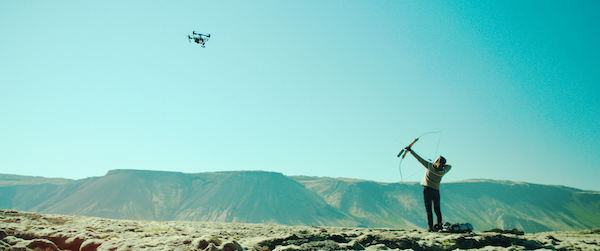
Courtesy of Magnolia Pictures Halla discusses the adoption with her yoga-teaching twin Àsa (also played by Geirharðsdóttir), who encourages her to do it (having no idea about the eco-terrorism). Halla — the film’s title obviously refers also to her internal conflict — isn’t so sure. She distributes a flyer declaring her mission and exhorting others to rise up and “Stop the war against the earth,” signing it “The Mountain Woman.” As the flyer is photographed, texted and posted on social media, we see the tuba player receiving one of the texts, one of the film’s many droll moments. The mysterious Mountain Woman becomes the subject of even more frenzied news coverage.
The tough, resourceful Halla continues her mission amid the rock formations of the beautiful Icelandic highlands with her biggest move yet. This involves going head-to-head with pesky drones, disguising herself as a sheep and generally acting like a badass superhero. (Impressively, Geirharðsdóttir did all her own stunts.) The hapless Spanish foreigner keeps getting apprehended by authorities, though he’s clearly just a convenient scapegoat.
The action builds to a scene at the airport, resolving in a classic twist (which is nonetheless satisfying). Though some nuances are doubtlessly lost on those unfamiliar with Icelandic culture (like this writer), Woman at War is still immensely enjoyable. To his credit, Erlingsson has made a somewhat surreal yet controlled film that is both pointed and playful. No easy feat to pull off so skillfully.
Woman at War opens in New York on Friday, March 1, at the IFC Center and Landmark at 57 West.
—Marina Zogbi
- 5 years ago
-
South Florida has become a considerable pocket of art in the last 12 years. Maybe even longer. Being so close to the equator makes the southernmost region of the United States pretty hot, climatically so, but in respect to artists turning heads in the city and bringing attention to the area (particularly Miami), artists with distinct backgrounds and practices are turning up the heat, making it hotter than before by addressing pressing issues.
Discussions such as climate change, gentrification, South Florida’s wildlife in the Everglades, preservation of local cultures and historical sites, or identity-politics seem to be on the artist’s minds and leak well into the works.
Every blossoming artist has a unique perspective and aesthetic to offer the public. Competition between peers shouldn’t be a factor in success, but instead should be acknowledged and applauded. Miami’s sundry is key to the city’s progress in the arts. It can be pretty hard to keep up with the talent and “who is who,” but even more so trivial to find individuals who care enough to spread the spotlight onto the enormous mass of creatives.
Amid the roaring sea of Miami artists, two women producers Elysa Batista, and Maria Theresa Barbist decided to pair up as a team. The result was the birth of Rocking Chair Sessions- spontaneous interviews with a list of preordained invitees from the arts community. The meeting’s format discloses both professional and personal information to the public, making it that much easier to connect the creative to a broader audience intimately.
Perhaps the interview is meant to document two endearing women getting to know someone better in their community or having a live “therapy session” that will enable their guest(s) to be more relatable to the audience rather than just a wildly imaginative, far-fetched, egocentric subject. Rocking Chair Sessions uniquely breaks the ice from one artist to the other. Once inside the charming studio, the guest sits with two smart and giggly ladies while enjoying a gentle sway on the ” magical” rocking chair at Bakehouse Complex in Wynwood, Miami.
After my curious session with Barbist and Batista, I decided to ask them a few questions too. After all, It’s quite fancy to reciprocate interest to two women who cordially extended southern hospitality to me and so many others in South Florida.
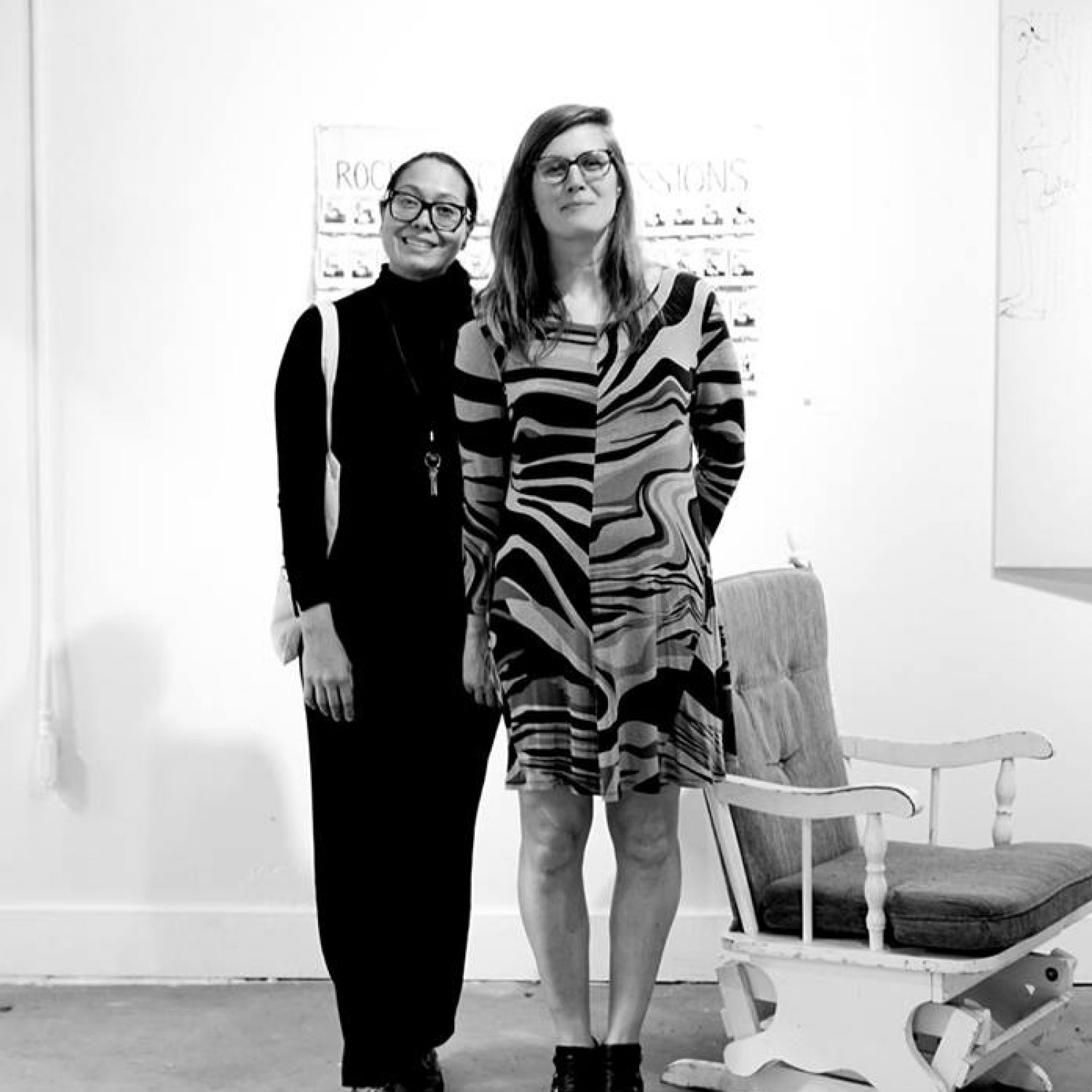
Elysa Batista and Maria Theresa Barbist, RCS Duo, Photo courtesy Elysa Batista ( Facebook snatch) Interview:
BB: When we last met, you (Barbist) asked me to make three wishes, which I had already asked the universe and am manifesting. I much appreciated it and wondered do you wish to ask this of the artist? Do you believe the power of collective energy hankers the tangible? In other words, if we all place a definite emphasis on the contentment of another, will all the energies add to the result of manifestation? Let me know if I am too esoteric or speaking by quantum physics.
BB: By the way, I can’t stop myself from thinking about the Care Bears. Do you remember when they used to huddle and activate the Care Bear Stare?
MB: It’s one of my favorite parts of the interview, to talk about the magical rocking chair and ask the artists for their wishes. I believe that thinking about one’s desires and speaking them out loud can set free energies in the person and the universe that can foster their fulfillment.
MB: Ever since I lived in San Francisco I started a personal spiritual practice with an oracle card desk called for dolphins and mermaids, very Bay Area. Here is an example of one of the questions in the cards. The card says: make a wish and enjoy its manifestation. Also, I do try to focus not just on the moment where a desire is happening but also every step along the way, mainly to open myself up for it to happen. You gotta have some magic in your life, right?
EB: Yes!!!! The Care Bears fully demonstrated what positive collective energy could manifest. Maria Theresa grew up in Austria and has sadly not experienced the Care Bears, but it’s funny how this podcast commenced as a Care Bear stare into the South Floridian pool and has overwhelmingly reflected and returned hundredfold in participation and support from the creative community.
BB: Barbist, how much of your background in psychology influence the interviews? I read on the RCS site that the meetings are “A hybrid between a therapy session and an artist interview.” Why is it so important to invite the artist to a session that drifts on a personal level? I am doing it right now with you. Can we both state that there is an innate humanistic yearning to understand someone who on so many levels has many things in common to yourself but has such a distinctive way of executing their knowledge that it could be influentially life-changing in our own lives?
MB: My training is psychotherapy was in a method called Psychodrama developed by the psychiatrist Jacob L. Moreno who was born in Romania, studied in Vienna and then emigrated to the US. Psychodrama is grounded in a humanistic view of the world with a focus on the human encounter. Moreno describes his idea in a poem like this:
- A meeting of two: eye to eye, face to face And when you are near I will tear your eyes out and place them instead of mine, and you will tear my eyes out and put them instead of yours then I will look at you with your eyes, and you will look at me with mine.
MB: Sometimes this happens in our Sessions, that after 50 minutes I have a deep understanding of the artist and his work. Also, I do believe that encounters like this can be therapeutic for the people involved, even if it’s not quite a therapy session.
BB: Batista what do you think about man/womankind’s thirst to return to humanity and the humane treatment of one another? Is this what brought you and Barbist to formalize RCS? I mean, do you think people have daily conversations such as this one with each other?
EB: I think that people can only handle so much toxicity. Either one separates themselves from that environment and becomes a loner, or chooses to surround themselves with positive, empathetic humans.
EB: Sharing kindness and respect is something that one craves to receive, but not everyone is willing to give. I do believe that the beginning of RCS was from an honest and pure-hearted place and continues to do so. We had a desire to engage and highlight the community we interact with and find to be inspiring, regardless of our non “big” city location. I do believe that people have meaningful and positive exchanges of conversation and energy, but can we use more of it? Certainly!
BB: How would the dynamics change in your interviews if a non-artist guest was invited to sit and participate in the discussion? Would that change RCS’s mission or could that be another layer and the start to another community project?
MB: We have interviewed non-artists before, most curators, gallerists or museum directors, so still people in the art world. I think the concept could be easily used for other professions as well, but since we are both artists, I guess those are the people we magnetize towards to, the local South Florida art community.
EB: I think that every sector has a language or insider knowledge that although we might not be privy to, we are still people asking individuals to take the time out of their life to share their story with us. So in a way, some dynamics would fluctuate if the people interviewed were not from the art community, but at the end of the day, RCS is about the human narrative and journey to the present.
BB: Would RCS visit other cities and artists? Why or why not?
MB: We have been considering doing residencies in other cities and than for example interview the other residents in that community, building new networks. For now, we are gonna stay in Miami, but who knows what the future brings. I definitely would also love to bring in the Bay Area art community that I was part of when I went to SFAI, and Elysa has a big network in New York from her days at Parsons.
EB: Bruja! This idea has come up. I have firmly come to learn never to say never but to concentrate on time and opportunity. As Maria stated, the groundwork has set for RCS here in Miami, but who ever really knows?
BB: Aside from Miami artists referring other individuals to be on the podcast, has there been any magical outcomes such as collaborations or new connections formed from being here?
MB: I don’t know what happened to all of the artists after the interview, but for sure Elysa and I had a lot of magical things happen to us. We are starting with so much support for our first RCS exhibit last year at the Bakehouse, where for example Kiki Valdes whom we were interviewing when the show up did this beautiful video of the exhibition for us or Monica McGivern who did the photography of the show. Now we are collaborating with Anthony Spinello and Oliver Sanchez, local gallery owners, on the next RCS exhibits. As Elysa would say, we’re blessed with all the support that we are getting for this project from day one.
EB: We have seen participants win Ellies, Grammy’s, and South Florida Consortiums, not by anyone’s doing but their hard work. It’s genuinely phenomenal to get to witness.
BB: Ladies, are there any fond memories you’d like to share with the readers? Also, what three wishes do each of you have to request the universe?
MB: Elysa loves to tell the story of when I messed up with the recording equipment… So there was this one time when I forgot to push record and found out 20 minutes later that we have not been recording anything. It was the only 70-minute session; you will never know what happened in the first 20 minutes. Then there was the time Sarah MK Moody who brought her brand new baby to the recording, and little Stella was perfectly happy (and quiet) in her lap for the whole session. However, so many of the few moments are special to us, when we learn things about other artists that you usually don’t talk about at gallery openings.
EB: Ha! That’s a funny one, and baby Stella was our youngest RCS interviewee before sitting down with two expecting artists. My favorite moments are those where a chord is touched, and a connection made. Every time we sit I find myself appreciating humanity more deeply. Each session has a unique memory or lesson learned or inspired. We separate and distance ourselves from each other sometimes, but when we listen and engage in conversation, wow, we’re equals.
EB: I have a few fond memories. Listening to our jingle for the first time, celebrating each recording milestone: 1, 5, 1O, etc., and most importantly, when an interviewee says YES to sitting down with us and follows through. RCS is for them.

Photo courtesy RCS ( Rocking Chair Sessions) Website Maria forgot her wishes. I wish for a healthy planet, a world devoid of abuse of power, and kindness/happiness/love for all.
Edited by Abel Folgar
Written by
- Beláxis Buil
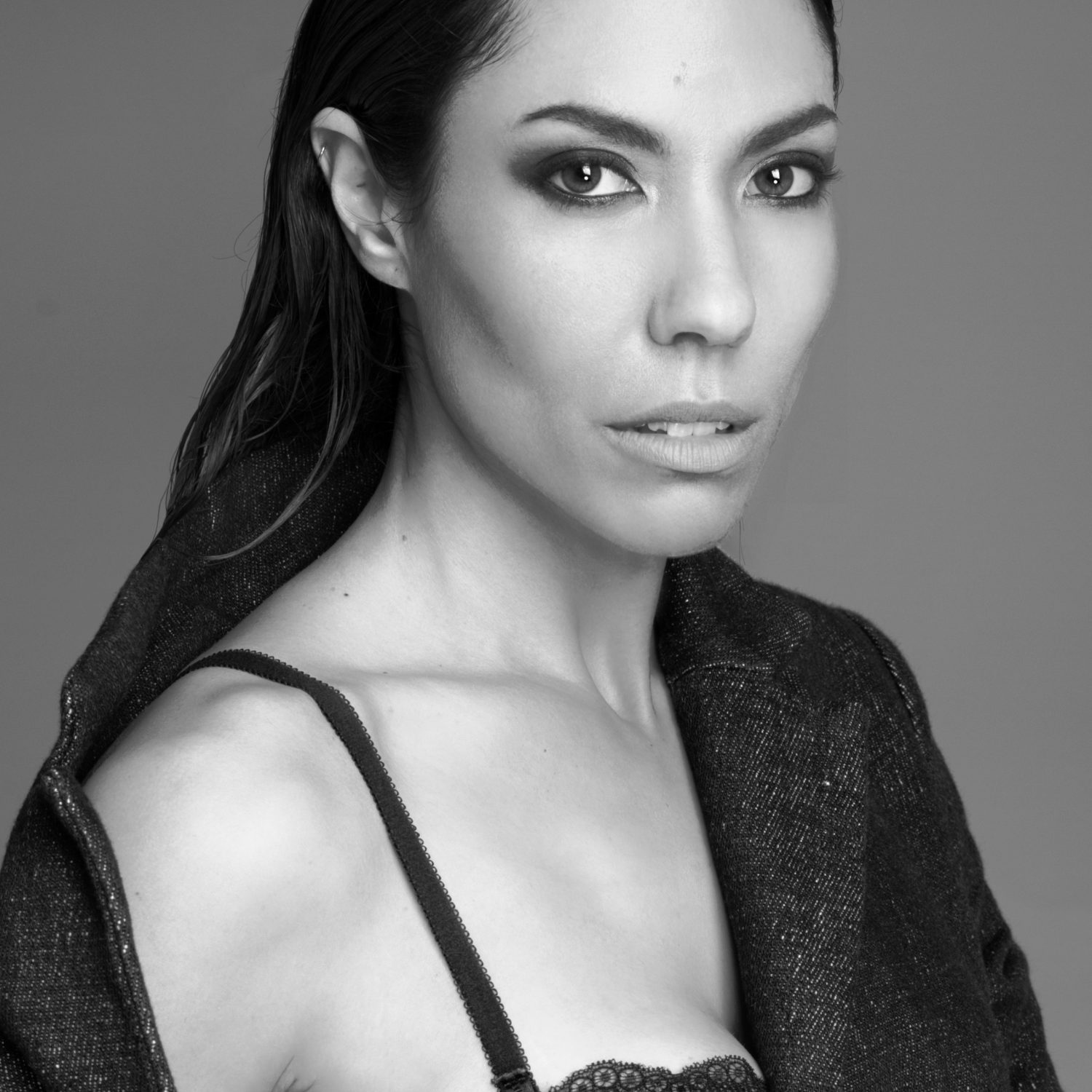
- 5 years ago
-

Courtesy of Greenwich Entertainment There have been many worthwhile films about the World World II Holocaust and its survivors. Though it seems as though every angle has been covered, The Invisibles, a riveting docudrama by German filmmaker Claus Ráfle, is an unusually compelling new addition to the genre.
Goebbels declared Berlin free of Jews in 1943 (the city originally numbered 160,000); however, out of the 7000 who resisted deportation and remained, 1500 were left by the war’s end. The Invisibles follows four young Berliners, as they individually defy the Nazi mandate to evacuate via deportation, choosing instead to wait out the war as veritable fugitives in their own city.
Cioma Schönhaus, Hanni Lévy, Ruth Arndt and Eugen Friede are skillfully portrayed by actors in their youth and appear as themselves discussing their experiences decades later. Ráfle smoothly weaves their individual stories together, creating a movie that plays like a spy thriller as the protagonists face mounting danger from Nazis and, ironically, Allied bombs and invasion, while finding help from various heroic resistors.
Though their plights are obviously similar, the four had different experiences marked by a shared characteristic: a sort of youthful fearlessness and resourcefulness, combined with a fierce will to survive.
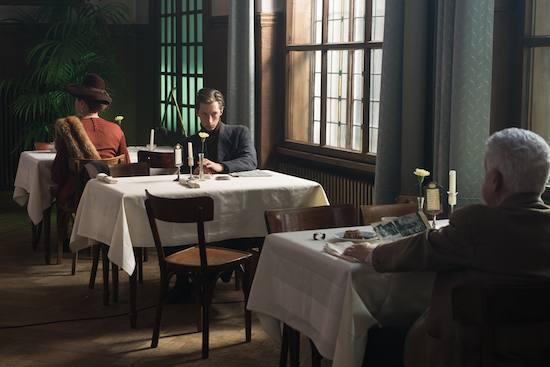
Courtesy of Greenwich Entertainment In 1942 Schönhaus (Max Mauff), a somewhat cocky, 20-year-old art student, is separated from his parents at the deportation center when he declares that he works in a gun factory doing important work for the state, granting him exempt status. The same year, 20-year-old Arnt (Ruby O. Fee) and her close-knit family are helped by friends who agree to hide them “until the war is over,” thought to be imminent.
By early 1943, Jews were not allowed radios, bikes or pets. They needed permits to ride public transportation.
The youngest at 16, Friede (Aaron Altares) is hidden by his non-Jewish stepfather. We see him chastised on a bus for not wearing a star, then ordered to give up his seat by the conductor. Another passenger gives Eugen a pack of cigarettes, an example of the sympathy felt by some fellow Berliners.
An orphan, 17-year-old Hanni Levy (Alice Dwyer), went into hiding after the family raising her were deported. She dyes her hair blonde, later recalling, “I became someone else.” During the day, she goes out into the bustling Kurfürstendamm and tries to blend in, being careful to “act normal” though she compulsively scans her surroundings.
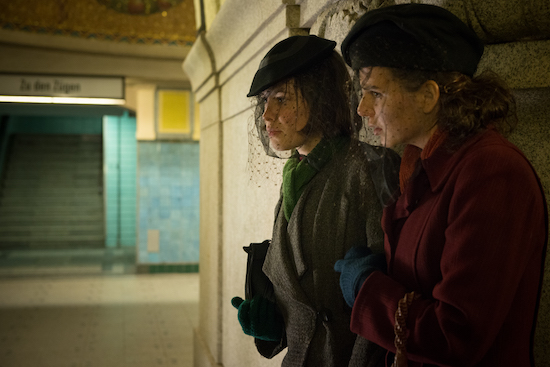
Courtesy of Greenwich EntertainmentInterspersed with the reenactments and interview snippets is black and white footage of 1940s Berlin, a dynamic city not unlike New York, where it was plausible to believe that one could disappear into the crowd.
The enterprising Cioma, skilled at forging passports, finds work with a resistance leader. Posing as a soldier called into service, he is able to procure a list of temporary lodgings. Eugen stays with sympathetic Communist friends of his father but is forced to move elsewhere when they fall under suspicion. For a while, his life is almost normal, unlike Ruth, who later talks about the constant exhaustion and hunger.
As the war progresses and the Nazis crack down, the four manage to cope with their terrible circumstances. Ruth and a friend pose as war widows in veils, finding escape at the cinema; Hanni also finds refuge at the movies, later befriending and moving in with a woman who works at the theater.
A striking aspect of the film is the number of non-Jewish resistors willing to endanger themselves and their families to help the four, including at one point, an SS officer who hires Ruth and her friend as maids.
There are appearances by the infamous informer Stella Goldschlag and notoriously intrepid resistor Werner Scharff, larger than life characters (for wildly different reasons) who add considerable color and tension to the film.
The arrival of U.S. bombers is cheered by the protagonists, though Berlin is decimated by the attacks. Similarly, they welcome the arrival of Russian troops, though the latter generally refuse to believe that anyone left in the city is Jewish. A scene featuring an emotional encounter with one disbelieving Russian soldier is one of the movie’s highlights.
That the four managed to stay alive and carry out their lives in various countries, including the U.S., seems miraculous. The Invisibles is a well-crafted tribute to the 1500 who survived and to those who helped make it possible.
The Invisibles opens on Friday, January 25, at Landmark 57 West and Quad Cinema.
—Marina Zogbi

